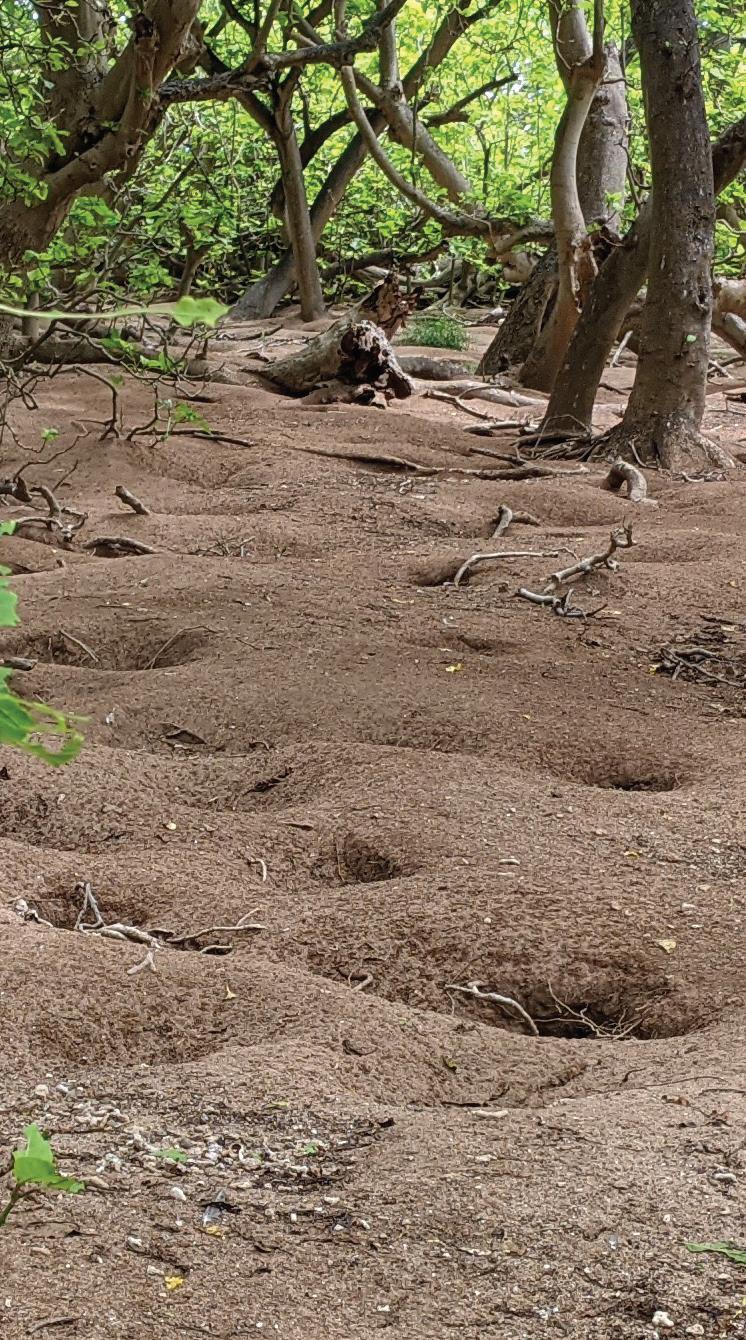
5 minute read
Great Barrier Reef Experience at the Musgrave Island
Brisbane, April 4 by Amrita Deshpande Queensland’s most attractive tourism experience is the Great Barrier Reef Adventures. The Reef starts from the Lady Musgrave Island near Bunderberg and goes north right up to Cairns. Each side of the Reef is unique and the Tourism companies operating those Reef experience boats definitely gives you the best experience of lifetime.
The only catch in this whole reef experience is the two hour boat ride to get to the Reef. If you can survive that journey, you will definitely call it the Million Dollar experience. Those who have motion sickness should take precautions early on before jumping on the boat. Take the medication 40 minutes before departure and you will be fine.
Advertisement
Having said that I will really appreciate the crew of the Lady Musgrave Island Reef Experience boat on March 31st for their support and care given to those who felt sick on the boat. They gave personal attention and were extremely kind to everyone. So don’t worry, even if you get sick, you will be well taken care off.
Once you are past the motion sickness the environment offers tons of beautiful experiences.The water as you go further away from the shore turns from the muddy brouwn to sea green to a beautiful ultramarine blue. Something that you will notice and won’t be able to take your eyes off as you reach the area where the Reef starts.
The Reef experience tour includes scuba diving or snorkelling, glass bottom boat ride to the Lady Musgrave Island, a walking tour of the Lady Musgrave Island and trutle and fish feeding experience.
The glass bottom boat experience is one that really motivates you to jump into the waters and see those corals upclose. The glass bottom boat is also for those who are not so brave to jump in the ocean and swim far to get the real experience of the Reef. The glass boat hovers over corals, fishes, turtles. It goes over the resting hill for the turtles which is called the cleaning site. The corals here are so close that it almost feels like the boat bottom will scrape them off.
This boat takes you to the Lady Musgrave Island for another mesmerising experience of being on an Isolated Island in the middle of no where. The Lady Musgrave Island is named after Lady Lucinda Musgrave the wife of a colonial Governor of Queensland Sir Anthony Musgrave. The aboriginal name for the Island is
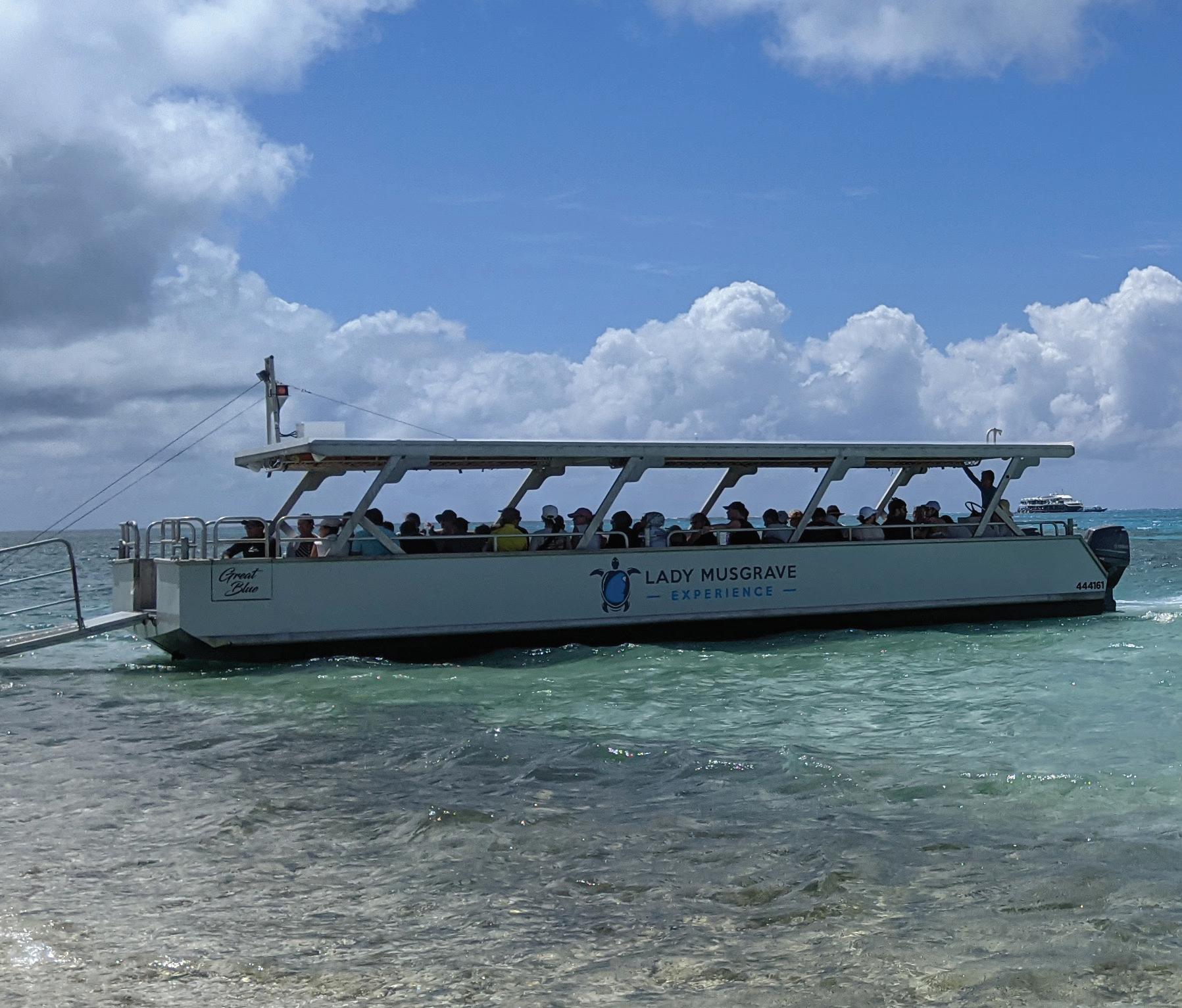
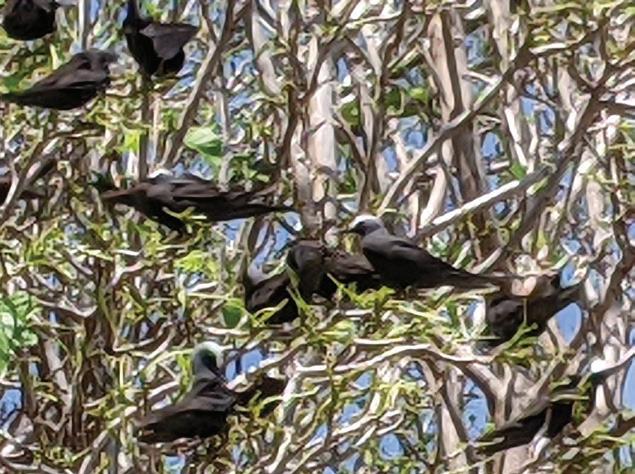
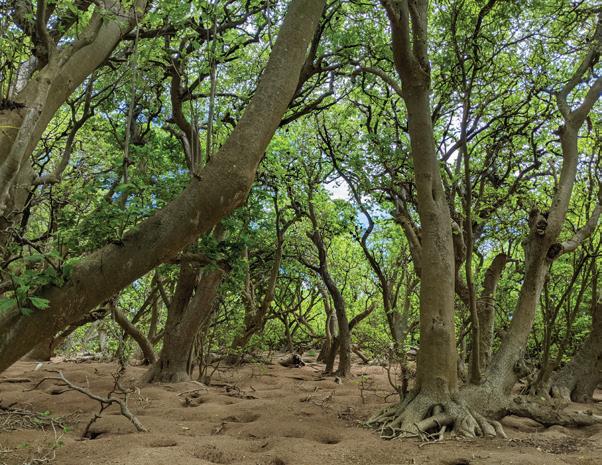
Wallaginji meaning “beautiful Reef”
The walking tour is definitely a must do if you are at the Lady Musgrave barrier reef experience. The variety of trees and bird spieces you see on this island are unique to the island, hence it is a one time experience which may or may not happen else where.
You will see pisonia trees as the main vegetation on this Island. The pisonia tree has a sweet and sour identity. Sweet because it gives the shade and nutrition to the vegetation, sour because the sticky seed pods of the tree are fatal to the native birds found on the Island. The Noddy Tern is the bird specie found on the Lady Musgrave Island. It is a white head, black body crow like bird that feeds on the tree. However, the tree throws the sticky seed pods which cover the birds, making it flightless and eventually die. The bird becomes the nutrition, fertiliser for the tree replinishing the tree to keep growing. The sea gulls here dig holes in the ground to build nests and lay the eggs in it to protect the offsprings from shooting scavenger birds snatching everything that comes in their way on the ground.
On the Island one can camp, however, you need to take everything that you need, food, water, fire, shelter, and clothing as there is nothing on the Island and you will be left alone for the night. There are a few boat tours that come in and out during the day, but at night it is dark and quiet.
Tourists can also stay at the pontoon that floats on water a few nautical miles away from the island. There you have every luxury possible giving you the best ocean and reef experience. During the day and at night you can go snorkelling, scuba diving from this Pontoon. There are a lot of Turtles you will see surrounding the pontoon. A few baby sharks, manta rays, clown fish, turtles are the fishes you will definitely see here.
Overall it is a great experience despite the two hour journey that sways you off your feet making you sick. Past that it definietly is a beautiful experience, something not to be missed.
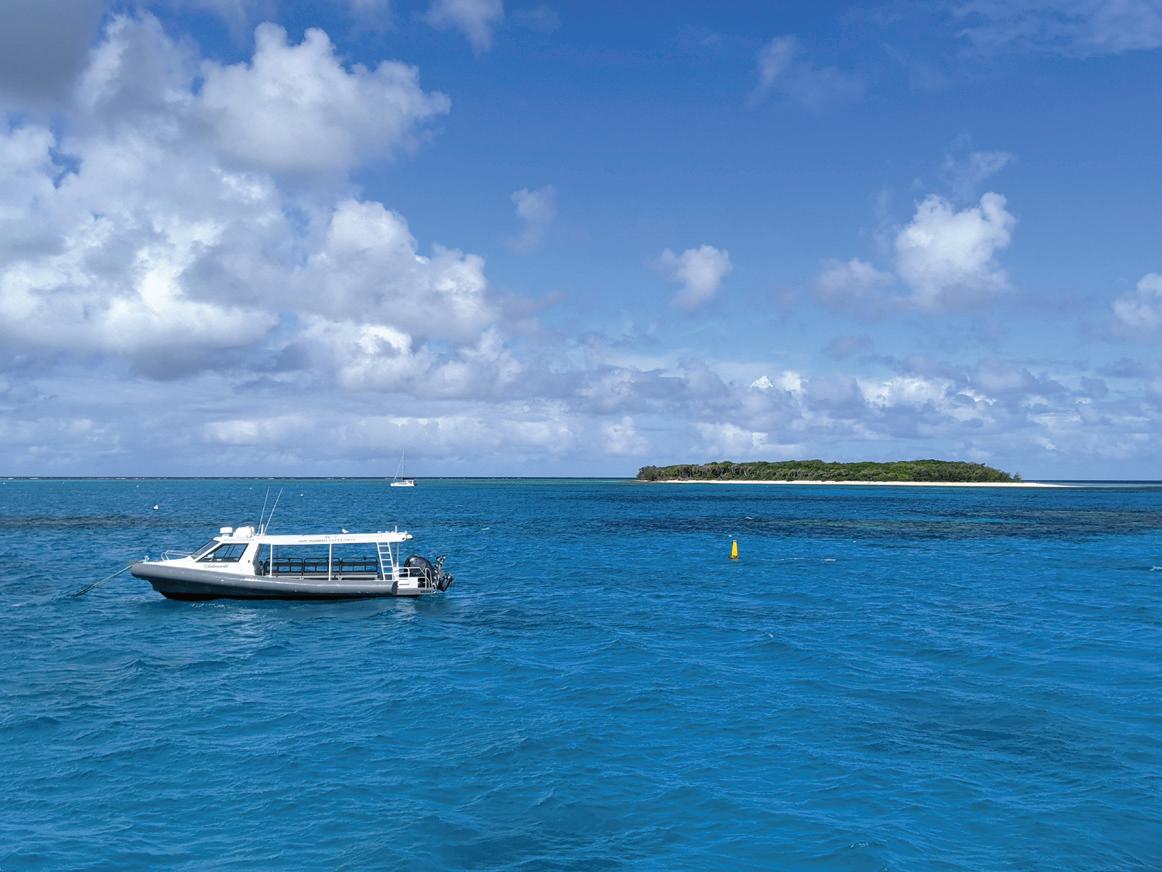
Great Barrier Reef island national parks and conservation parks increased in area under the Great Barrier Reef Island Arks project
* Barnard Island Group National Park, south of Cairns, increased by 0.62 ha by dedicating Bresnahan Island, a significant nesting site for the bridled tern, black-naped tern and pied imperial-pigeon.
* Bowling Green Bay National Park, Townsville, increased by 2.7 ha by dedicating Bray, Bare, and Bald islets, forming part of a bioregional corridor and providing significant bird nesting sites for the white-bellied sea-eagle and black-naped tern
* Brampton Islands National Park, off Mackay, increased by 4 ha by dedicating 6 additional islands, protecting important bird nesting sites.
* Broad Sound Islands National Park, off Rockhampton, increased by 329.55 ha by dedicating an additional 24 parcels of land on the islands that contain breeding sites for various bird, green turtle and flatback turtle species.In addition, the Broad Sound Islands Conservation Park increased by a further 50.3 ha by dedicating parts of Wild Duck and Collins islands, that were former esplanade, as protected area, providing connectivity and management benefits with the overall conservation park
* Curtis Island National Park increased by 66.41 ha by dedicating Black Swan Island, two islands at Shellys Knob and an island in Graham Creek. These areas contain significant wetland and threatened ecological communities and provide wildlife refugia and important roosting sites for the eastern curlew and great knot.
* Eurimbula National Park, on the mainland south of Gladstone, increased by 15.2 ha by dedicating Bird Island and a nearby unnamed island that provide low tide connectivity with the existing national park and will improve management of the area.
* Family Islands National Park, off Mission Beach, increased by 1.47 ha by dedicating Wol-Garin Island and Pee Rahm Ah Island that contain “of concern” regional ecosystems and provide roosting sites for sea birds such as the white-bellied sea eagle and eastern osprey.
* Frankland Islands Group National Park, south-east of Cairns, increased by 2.36 ha by dedicating Catalina Rock, the addition enabling the continued protection of the island that is an endangered regional ecosystem.
* Gloucester Island National Park, off Bowen, increased by 17.75 ha by dedicating six islands containing regional “of concern” ecosystems and providing habitat for vulnerable species including the green turtle.
* Goold Island National Park, north of Hinchinbrook Island, increased by 21.2 ha by dedicating an adjoining island, providing connectivity with Goold Island National Park and will improve strategic management.
* Keppel Bay Islands National Park, off Yeppoon, increased by 17.44 ha by dedicating Flat Rock, Round Rock, Mother Macgregor, Bluff Rock, and Creek Rock islands and part of Hummocky Island.









